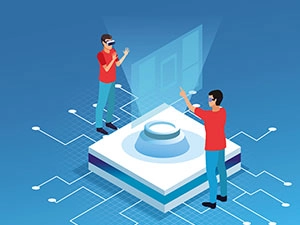How do intelligent sensors work? – User guide from Remote Techs
Posted By Remote Techs On 27-September-2023

As an expert at Remote Techs, we are excited to guide you through the fascinating world of intelligent sensors and how they work.
Understanding the Basics
Before delving into the intricacies of intelligent sensors, let’s establish a fundamental understanding of what they are. Smart sensors are compact electronic devices designed to detect, measure, and transmit data about the physical world. They can monitor various environmental factors such as temperature, humidity, light, motion, etc.
1. The Components of Smart Sensors
Intelligent sensors comprise several essential components that work harmoniously to gather and transmit data. These components include:
a) Sensing Element: This is the heart of the sensor, responsible for detecting environmental changes. Depending on the type of sensor, it could be a thermistor, photodiode, or accelerometer, among others.
b) Signal Conditioning Circuitry: Once the sensing element detects a change, the signal conditioning circuitry processes and amplifies the raw data to make it suitable for further analysis.
c) Microcontroller/Processor: Smart sensors have a microcontroller or processor that handles data processing, storage, and communication tasks. It’s like the brain of the sensor.
2. The Working Principle
Now, let’s break down how smart sensors operate step by step:
a) Sensing:The process begins when the sensing element detects a change in the environment. For example, the temperature sensor measures the current room temperature in a smart thermostat.
b) Signal Processing: The signal conditioning circuitry processes the raw data from the sensing element, converting it into a digital signal. This step helps improve accuracy and reliability.
c) Data Analysis: The microcontroller or processor analyzes the processed data. Depending on the sensor’s programming, it can trigger specific actions or make decisions based on the data received. For instance, in a home security system, a motion sensor can detect movement and trigger an alarm.
d) Data Transmission: Smart sensors can transmit data through various communication protocols. They can send data to a central control unit, a mobile app, or the cloud for remote monitoring and analysis.
e) Feedback and Control: WMany smart sensors offer a feedback mechanism for environmental changes. For example, an intelligent irrigation system can sense soil moisture levels and adjust watering schedules accordingly.
Contact Remote Techs For IT Support Los Angeles Today
We provide comprehensive, tailored solutions ensuring smooth and secure operations. Trust our expertise to empower your business for growth and resilience.
Contact Us3. Applications of Smart Sensors
The versatility of intelligent sensors has led to their widespread adoption in various industries and applications. Here are a few examples:
a) Smart Homes: Smart sensors are at the core of home automation systems, controlling lighting, thermostats, and security devices.
b) Healthcare: They play a crucial role in medical devices, monitoring patients’ vital signs and providing real-time data to healthcare professionals.
c) Manufacturing: In industrial settings, intelligent sensors ensure quality control, monitor machinery, and improve production efficiency.
d)Environmental Monitoring: Smart sensors help track air quality, water quality, and weather conditions for ecological research and public safety.
e) Transportation: They enhance vehicle safety and efficiency by monitoring tire pressure, engine performance, and driver behavior.
4. Advantages of Smart Sensors
The adoption of intelligent sensors offers numerous advantages:
a) Improved Efficiency: They automate processes, reducing the need for manual intervention.
b) Enhanced Safety: Intelligent sensors can prevent accidents and save lives in applications such as automotive safety systems.
c) Energy Conservation: Smart sensors optimize energy usage in buildings, helping reduce utility bills and environmental impact.
d) Data-Driven Insights: They provide valuable data for informed decision-making and predictive maintenance.
In conclusion, intelligent sensors are the unsung heroes of the modern world, working silently behind the scenes to make our lives easier and more efficient. As Remote Techs, we’re committed to staying at the forefront of sensor technology and providing innovative solutions for our customers. If you have any questions or need assistance with smart sensor integration, please get in touch with us. Together, we can harness the power of intelligent sensors to shape a more innovative, more connected future.